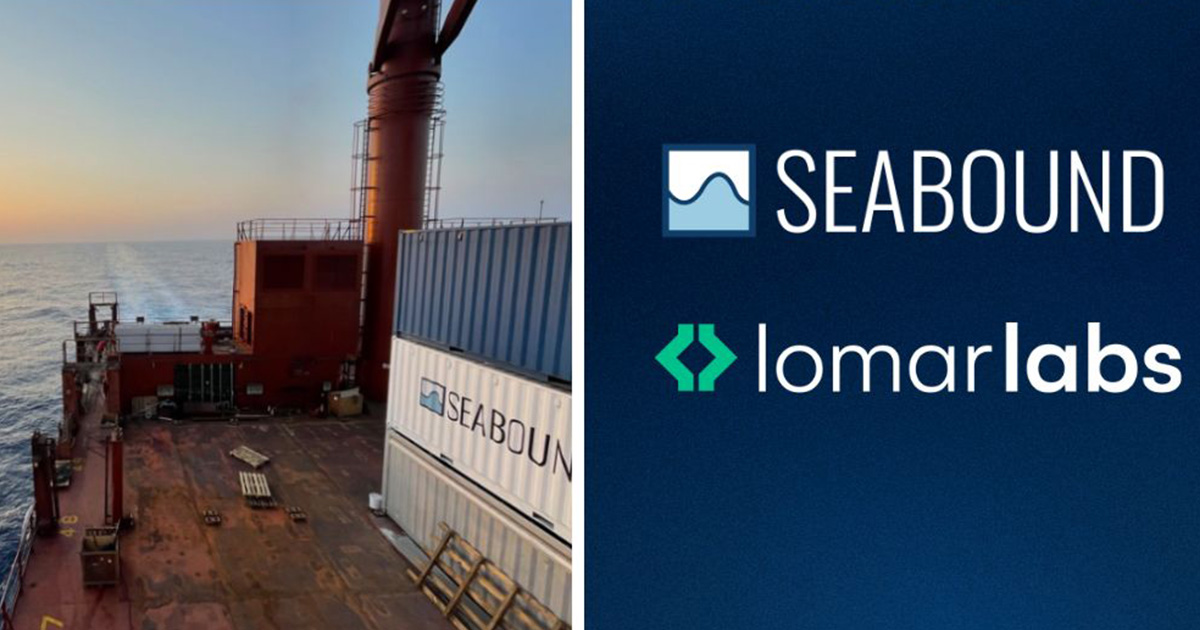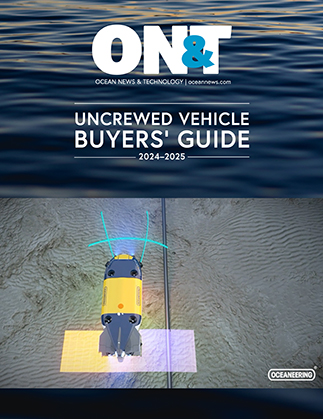lomarlabs began its collaboration with the climate tech start-up last April and used the Lomar containership SOUNION TRADER as a floating lab to test the technology, which operates on recyclable consumables and doubles up as a Sulphur scrubber. This collaborative pilot proved that Seabound’s unique system, which uses a second-generation carbon capture technology called calcium looping, could efficiently transform CO2 emissions into solid calcium carbonate pebbles. The limestone pebbles are safe, inert and non-toxic, and can be easily stored on board before being offloaded in port for sale in pure form or turned back into quicklime and CO2, for the quicklime to be reused onboard another vessel and the CO2 sold for utilization or sequestration. This highlights the innovative and environmentally conscious approach Seabound is bringing to carbon capture in the maritime industry.
Seabound’s team installed the device on the Lomar vessel during a scheduled drydocking at the Sefine Shipyard in Altinova/Yalova, Turkey, in June 2023. The prototype system was retrofitted on deck, aft of the ship’s engine exhaust funnel. After receiving testing approval from the American Bureau of Shipping (ABS) and an additional risk assessment conducted by Lloyd’s Register, Seabound’s team then embarked on a two-month voyage to gain their first-ever operating experience of the system. Through a series of tests, Seabound recorded a progressive increase in the carbon capture rate, culminating in a carbon capture efficiency of 78% and Sulphur capture effectiveness exceeding 90%. Unlike scrubbers, which are designed to mainly remove Sulphur pollutants from exhaust gasses, Seabound’s technology captures both Sulphur and Carbon Dioxide from the gasses with a single device, which is a noteworthy accomplishment, showcasing the effectiveness and innovation of Seabound’s technology in addressing environmental challenges.
Overall, the test successfully captured roughly one ton of CO2 per day in the prototype system, demonstrating the feasibility of this novel Seabound technology, while also laying the foundation for full-scale installations in the future.
lomarlabs Managing Director, Stylianos Papageorgiou, said: “Seabound’s technology presents an attractive and viable solution for reducing carbon emissions on existing ships as well as new, with a system that is simpler to install, operate and maintain than others we have seen. We are excited to join Seabound’s mission and believe this technology could be instrumental in driving a cleaner future for maritime transport.”
Seabound Co-Founder & CEO, Alisha Fredriksson, added: “Our pilot project demonstrates that capturing carbon emissions directly from ships is not only possible but also highly effective. This breakthrough puts us on track to achieve our ambitious goal of capturing carbon onboard 1,000 ships by 2030, making a significant impact on the global effort to curb climate change.”
Lomar and Seabound secured £1.2 million in grant funding from the UK Government as a part of the Clean Maritime Demonstration Competition Round 3 (CMDC3) to support the pilot.

